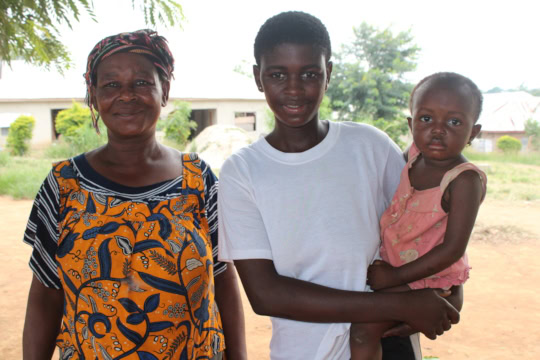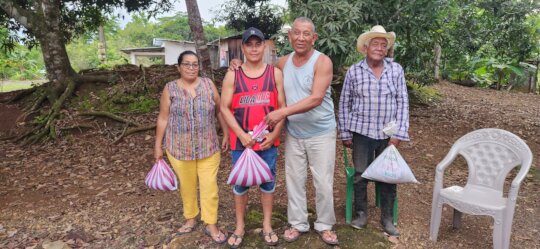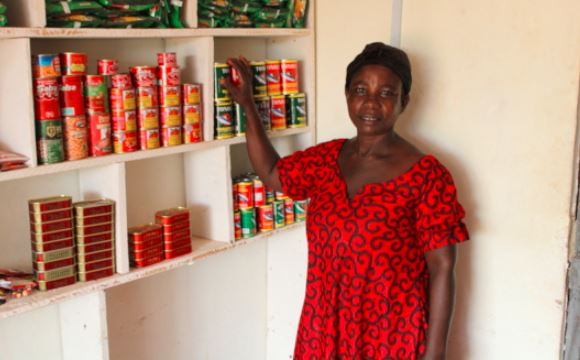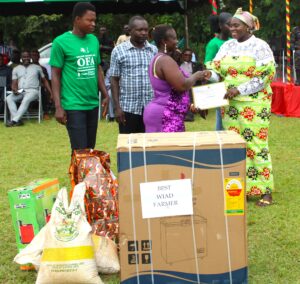Record Successes with Conservation Agriculture

Farmers discuss using water bottles as drip irrigation for dry season cultivation
Minimizing Production Cost While Growing and Consuming More Protein
In Ghana, the majority of farmers are subsistent— cultivating less than five acres annually. They farm to feed their families and also generate income to cater for other family needs such as paying medical bills and schools fees. Access to land and credit are major challenges confronting subsistent farming in Ghana.
In situations where land is a limiting factor in crop production, use of high yielding crop varieties and effective soil management can’t be compromised.
In 2014, SHI trained six farmers; two females and four males from Bedaabour (in the Atwima Mponua District) and gave them inputs on credit to cultivate one acre each of high yielding Quality Protein Maize (QPM). They recorded increased yields, averaging 1,100 kg of maize per acre, which yielded higher profits. Based on the successes recorded, the number of farmer beneficiaries was increased from six to twenty; seven females and thirteen males in 2015. All 20 farmers received improved agronomic training on land preparation, row planting, and fertilizer application. After the training, they were able to train their colleague farmers— passing these skills onto others in need. Self-Help provided all twenty farmers inputs credit which they paid back in-kind. The process was repeated again this year, in 2016, with 25 farmers receiving training and inputs. The yields were a success again, just like the previous year.
Though the farmers continue to record good yields, the cost of production keeps increasing yearly due to the fact that most of the inputs given to them are imported, and the local currency (the Cedi) is weak. This year alone, the Cedi has depreciated by over 20% against the US dollar. The gains made by the farmers are thus eroded by the weak performance of the Cedi.
This year, for an acre of maize, each farmer received inputs worth two hundred and fifty-three Cedis (GHC253) and out of this amount, forty-three Cedis (GH43), representing seventeen percent (17%) of the production cost, is for herbicides. The Young Adults Training Centre is currently training farmers to be able to reduce their production cost through conservation agriculture.
Using three experimental plots, the farmers have learned that intercropping with a leguminous crop like cowpea reduces the cost of weed control. There are three different treatments; 1, 2 and 3. Treatment 1 has mulch, and Treatment 2 is the control plot (only okra). Treatment 3 is okra intercropped with Bush Mucuna. Weed infestation is high on Treatment 2 (the plot without mulch), and weeds have been cleared twice on Treatment 2 since planting. No weeds have been controlled on both Treatments 1 and 3 since planting. However, weeds are seen on the portions of Treatment 1 where the mulch has decomposed (refer to photos).
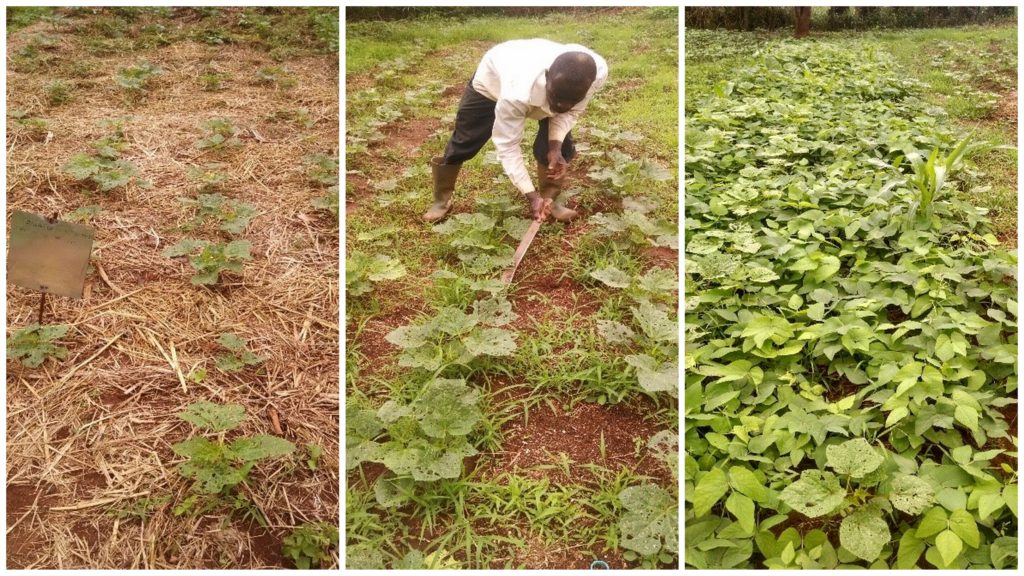
Treatment 1: Mulch (left) // Treatment 2: No Mulch (center) // Treatment 3: Cover Crops (right)
It is worth noting that, in addition to minimizing production cost, intercropping with a leguminous crop will ensure that the farmers have the much needed protein necessary for the growth and development of their children. Again, as they produce two crops, they are better able to deal with price fluctuations of their commodities; a fall in one commodity price may be compensated for by the other, thereby stabilizing their capital and avoiding unwarranted collapse of their businesses.
Thank you for your support, which has made the progress to date possible. In coming seasons, we plan to establish more demo plots in selected communities to be able to educate more farmers on conservation agriculture. Make a donation towards this goal here.

 Previous Post
Previous Post